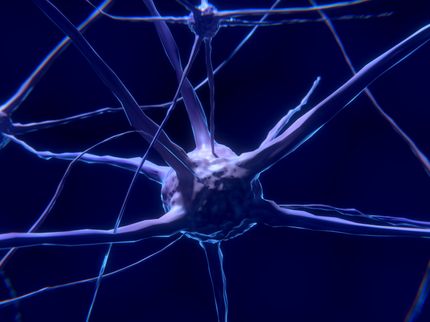Researchers Identify Acid Taste Sensor for the First Time
Researchers at the University of Southern California (USC) have just identified the acid taste sensor, which until now was unknown, according to the journal 'Current Biology'.

Image by Ryan McGuire from Pixabay
Sour-flavored fruits and vegetables are rich in acids, including citric acid for lemons, tartaric acid for grapes, and acetic acids in fermented foods such as vinegar.
It has been recognized for more than a century, since the introduction of the pH meter, that the low pH and high concentration of H+ ions in these foods generate a perception of acidity in humans. But it was not known how the pH is detected at the level of the tongue, and specifically which molecule constitutes the pH sensor.
A group led by Emily Liman, professor of Biological Sciences at the USC Dornsife College of Letters, Arts and Sciences, has discovered that a pH sensor in the tongue is the Otopetrin 1 (Otop1) gene. Otop1 is a member of a class of molecules called ion channels, which allow charged ions to cross cell membranes. In the case of Otop1, the charged ion transported through the membrane is H+, which the acids release in the mouth.
Last year, Liman's team published research in 'Science' that approached the acid taste sensor. In that study, they used high-performance sequencing methods made possible by advances in genomics to identify a list of approximately 40 previously uncharacterized genes that could encode a sour sensor.
By studying the function of each gene, they reduced the list to Otop1 because it was the only candidate that, when introduced into the tasteless cells, gave them the ability to respond to acids.
Taste occurs when ingested chemicals interact with specialized cells on the tongue and palate. These cells, called taste receptor cells, are found in the taste buds, which are concentrated on the back, sides, and front of the tongue and on the palate.
The different taste receptor cells respond to each of the five basic tastes, and release neurotransmitters into the taste nerves that send signals to the brain. This allows the nervous system to determine whether the ingested chemical has perceived qualities such as bitter, sweet, umami, sour, salty or a mixture of the five.
The new study followed previous findings that Otop1 gave cells the ability to detect low pH. Graduate student Yu-Hsiang Tu used gene editing technology to generate mice with an inactivated Otop1 gene to assess whether the Otop1 protein was needed to respond to acids or acids. When sour taste receptor cells are exposed to acids, they respond by producing an electrical signal, or current, due to the movement of H+ ions across the cell membrane.
For his part, graduate student Bochuan Teng demonstrated that the sour taste receptor cells of mice with non-functional OTOP1 did not have detectable currents representing the movement of H+ towards the cells.
The sour taste receptor cells of the mutant mice also did not lower their intracellular pH when exposed to acids, which would happen if the H+ ions moved into the cell. Finally, the sour taste receptor cells of the mutant mice did not produce action potentials, another electrical signal, which are necessary to activate the taste nerve and signal to the brain in response to some acidic solutions.
While previous experiments were conducted with isolated taste receptor cells, the researchers also studied the importance of Otop1 in mice by measuring the activity of taste nerves in response to sour taste solutions introduced into the mice's mouth.
For these experiments, they teamed up with lead flavor researcher Sue Kinnamon and graduate student Courtney Wilson at the University of Colorado School of Medicine. As expected, the activity of these nerves was severely reduced in mice with nonfunctional Otop1, demonstrating that the ability of mice to detect acid solutions and therefore sour tastes was affected.
"Our results show that Otop1 is a bona fide acid taste receptor," Liman notes. This is the first definitive evidence of a protein that is necessary and sufficient for sour taste receptor cells to respond to acids and stimulate nerves to allow the perception of sour taste.
Surprisingly, scientists discovered that mice with a non-functional Otop1 gene could still produce a small response to sour taste stimuli; sour taste receptor cells still produced some action potentials and the taste nerve produced a small response to very acidic stimuli.
They postulate that another signaling mechanism, not related to Otop1, also contributes to the sour taste. They also tested behavior in mice and found that mice with a non-functional Otop1 gene still found averssive acid stimuli.
"The behavioral response to ingested acid stimuli is complex. You have taste receptor cells that can detect acids, but you also have the pain system, which responds to low pH," Liman says. Finding the molecular basis of the sour taste sensor takes us one step closer to understanding how different animals and individuals perceive the world.
The identification of the molecule responsible for taste opens up possibilities for wide application. This information can lead to an understanding of individual differences in food preferences and taste perception, guide nutritional science, and lead to novel approaches to pest control.
Flavor specialists and professional chemists can also use this information to manipulate flavors to make food or even medicines more palatable, while making household products containing toxic chemicals less palatable.
Note: This article has been translated using a computer system without human intervention. LUMITOS offers these automatic translations to present a wider range of current news. Since this article has been translated with automatic translation, it is possible that it contains errors in vocabulary, syntax or grammar. The original article in Spanish can be found here.






























































